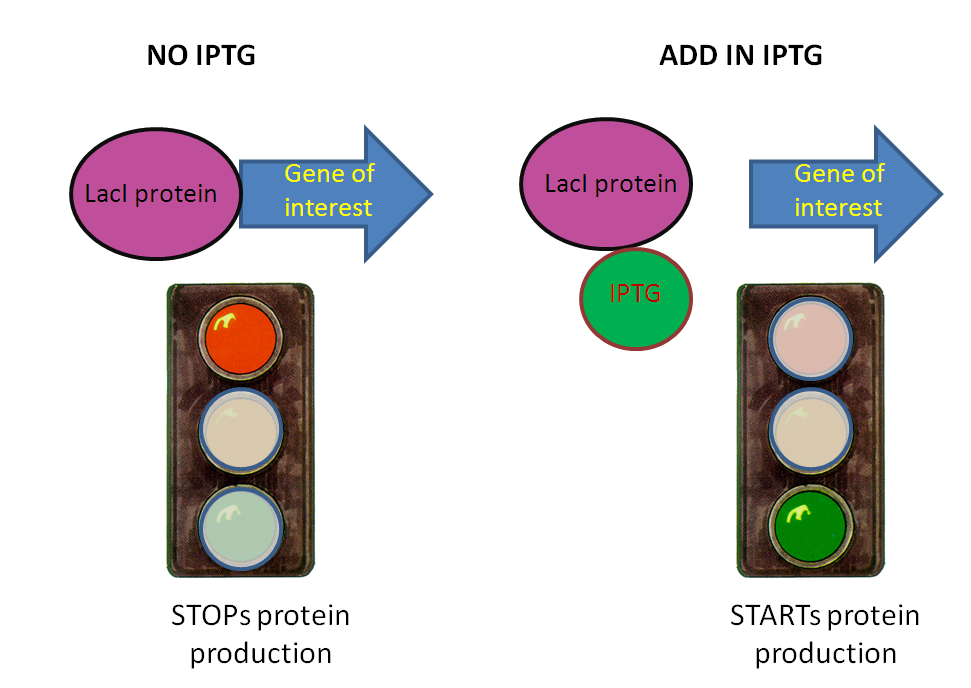Team:Imperial College London/Temporal Control/Chemical Induction
From 2009.igem.org
(→Chemical Induction) |
(→Chemical Induction) |
||
| Line 25: | Line 25: | ||
</tr></table></html> | </tr></table></html> | ||
<br> | <br> | ||
| + | |||
| + | <html><center><a href="https://2009.igem.org/Team:Imperial_College_London/Temporal_Control#Temporal_Control_Contents"><img width=150px src="https://static.igem.org/mediawiki/2009/1/10/II09_TourArrow.png"></a> | ||
| + | </html> | ||
| + | |||
| + | |||
{{Imperial/09/TemplateBottom}} | {{Imperial/09/TemplateBottom}} | ||
Revision as of 12:56, 9 October 2009

Chemical Induction
From the Module 1 genetic circuit, in the absence of IPTG in the system, the LacI repressor inhibits production of the protein of interest. When IPTG is added in we start the production of the drug of interest:
In a batch culture system, a defined volume of media is innoculated with a small number of cells. If the cells are being used for protein production, it is vital that synthesis is initiated at the right time. The optimum time for protein production is when there are a large number of rapidly dividing cells in a nutrient rich media.
In our system, the protein of interest is synthesised at the start of the production process in a phase known as Module 1 . Importantly, the time at which Module 1 starts is controlled by the addition of a chemical inducer called IPTG. This means that Module 1 can be initiated when there is the optimum ratio of cells to remaining nutrients.
 "
"










